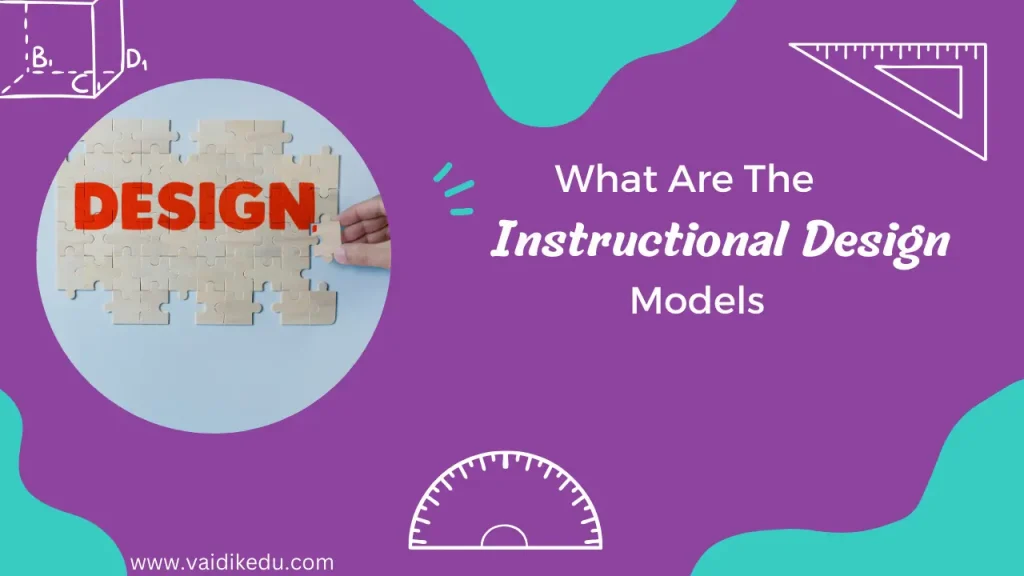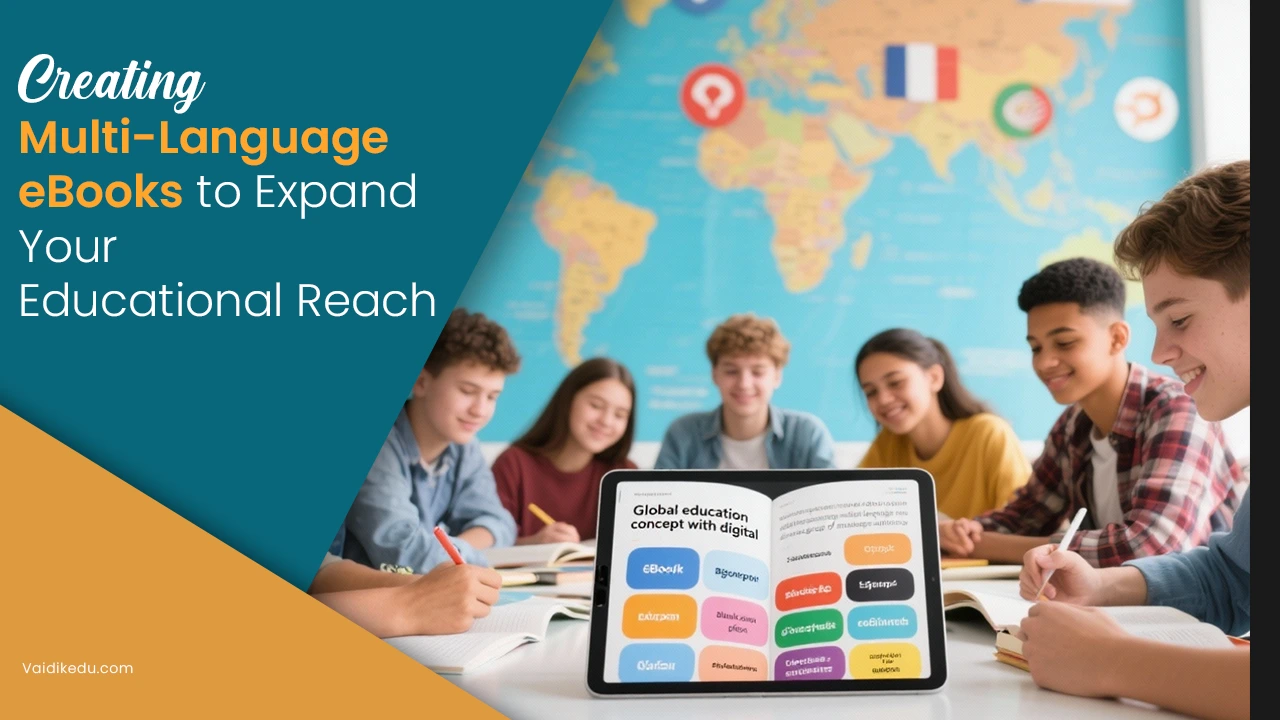The process of creating learning materials that help the learners is known as instructional design. It focuses on the needs of the learners and learning objectives. Instructional design models, on the other hand, provide a structured framework that allows the creation of educational content Development Services . Such models provide an ideal strategy to define, develop, and deploy educational content, thus helping the students achieve their educational goals.
Types OF Instructional Design Models
Here are some of the instructional design models that are used worldwide:
- ADDIE Model
- Bloom’s Taxonomy
- Merrill’s Principles of Instruction (MPI)
- Gagne’s None Events of Instruction
- Dick and Carey Model
- Kemp Design Model
- Action Mapping by Cathy Moore
- SAM Model
1) ADDIE Model
For creating ideal eLearning courses, the most ideal developmental instructional design model used is ADDIE (analysis, design, development, implementation, and evaluation). It provides a streamlined approach that provides feedback, allowing for continuous improvement. The key steps in the ADDIE model are as follows:
- Analyze
- Design
- Develop
- Implement
- Evaluate
➤ Key Focus- Systemic approach
➤ Best Suited For- General instruction design
2) Bloom’s Taxonomy
Bloom’s taxonomy presents the HOTS towards the top and LOTS towards the bottom when arranged at the top and bottom, respectively. It contains multiple levels and they are as follows:
- Remembering
- Understanding
- Applying
- Analyzing
- Evaluating
- Creating
➤ Key Focus- Learning objectives hierarchy
➤ Best Suited For- Curriculum development
3) Merrill’s Principles of Instruction or MPI
It is a task-centred approach that contains five principles, which are as follows:
- Task-centred
- Activation
- Demonstration
- Application
- Integration
➤ Key Focus- Step-by-step instruction
➤ Best Suited For- Problem-based learning environment
4) Gagne’s None Events of Instruction
Gagne’s nine events of instruction were developed by Robert Gagne and they are based on the behaviorist approach to learning. It identifies nine instructional events that help maximize the learning experience. They are as follows:
- Gain attention
- Inform learners of the objectives
- Recalling prior learning
- Present the material
- Provide guidance
- Elicit performance
- Provide feedback
- Assess performance
- Enhance retention
➤ Key Focus- Systemic approach
➤ Best Suited For- Classroom teaching, structured learning
5) Dick And Carey Model
The Dick and Carey model provides a structured method to design effective content. The model contains nine interrelated components, which are as follows:
- Identify goals
- Conduct analysis
- Analyze learners and contexts
- Performance objectives
- Develop assessment instruments.
- Develop an instructional strategy.
- Develop instructional materials
- Design and conduct formative evaluation
- Revise
➤ Key Focus- Systematic and detailed
➤ Best Suited For- Comprehensive course design
6) Kemp Design Model
The Kemp design model, also known as the Morrison, Ross, and Kemp model, was developed by Jerrald Kemp, who was an American. It has either a non-linear or circular structure, which ensures that the design process is a continuous cycle. It also contains nine elements, which are as follows:
- Determining specific goals
- Identification of the characteristics and needs of learners
- Clarification on the course content
- Define the instructional objectives.
- Sequential presentation of each component
- Selecting the appropriate mode of delivery
- Developing evaluation instruments
- Selection of appropriate resources for teaching
➤ Key Focus- Non-linear, flexible approach
➤ Best Suited For- Continuous improvement and modular design
7) Action Mapping by Cathy Moore
It is a quick, effective, and visual way to design and develop experiences for instructional productions such as simulations, training events, and eLearning. It is known as mapping as it helps to change what people do and is not limited to what they know. It is often used to design 100% action-packed materials, which helps to improve business performance. It includes four models:
- Identify the business goal.
- Identify what people need to do.
- Design practice activities.
- Identify what people need to know.
➤ Key Focus- Performance-based, practical focus
➤ Best Suited For- Corporate training with a focus on real-world tasks
8) SAM Model
The SAM model stands for Successive Approximation Model and prioritizes rapid iterations, efficiency, and collaboration. Dr. Michael Allen developed it and it is used as an alternative to ADDIE models, which are traditional instructional design models. The three major SAM1, which is the original SAM model, consist of major phases:
- Preparation
- Iterative design
- Iterative development
➤ Key Focus- Iterative, agile development
➤ Best Suited For- Rapid development and prototyping of learning solutions.
The SAM2 is a more detailed version of SAM1. It is intended for larger projects. It contains more steps apart from the three mentioned previously. The SAM model has multiple advantages, the most significant of which is its iterative nature.
How To Choose The Right Instructional Design Model
The selection of the correct instructional design model includes various factors, which include learning objectives, target audience, and the learning environment. Here are some tips that will help with the selection of the correct instructional design model.
1) Define learning objectives.
The first step in choosing the correct instructional design model is to outline what the learner should achieve. Different instructional models prioritize different models of learning and thus selecting the one is determined by which one aligns with the learning goals of the learner.
2) Understand the audiences
Depending on the characters of the learners, method of learning, levels of learning, etc., the selection of instructional design models can vary. The learner can be learning from a classroom or online, novice or expert, etc. Hence, depending on the circumstances, different models might be needed.
3) Consider the content
The complexity of the content can determine the instruction model as well. The more complex content often requires elaborate models and visualizations to make it easier to understand by the learners.
4) Assess Resources And Constraints
Various other factors, such as budget, time, available resources, etc., can also impact the selection of instructional design models. Some models can be resource-intensive, while others are much easier to deploy.
5) Evaluate flexibility
The last point is the flexibility of the instructional design models. Some designs are flexible and can be adapted to meet either the contexts or standards required, while others are rigid.
Conclusion
Various instructional design models play a crucial role in creating effective and engaging learning experiences. By understanding key aspects of models such as ADDIE, Bloom’s taxonomy, MPI, Gagne’s nine events of instruction, Dick and Carey model, Kemp design model, Cation mapping by Cathy Moore, and SAM model, one can select the model that is most suitable and fits the instructional needs. The correct model will make it easier and easier to develop and deploy ideal learning experiences for the learners.
FAQs
1) What is the purpose of instructional design models?
The instructional design models provide a framework to design and create educational content. It also helps to create educational experiences that are aligned with the goals and needs of the students while following the ethos of education.
2) Which is the best design model?
There is no one-size-fits-all answer, as each instructional design model has its benefits. Identify the one that best fits the needs and objectives.
3) Can the instructional design models be combined?
Yes, different design models can be combined to obtain the best possible result or to meet highly specific needs. Many often follow this method.
4) What are the skills needed for instructional design?
The key skills that are needed by instructional designers are as follows:
- Knowledge about instructional design principles, learning theories, educational technologies, etc.
- Ability to create engaging content.
- Strong analytical, organization, and communication skills.
- Creativity
- Problem-solving skills









